A Simulacrum of Language
The Inflation Mistake
“Essentially, no central banker who wants to keep his job is going to have 60% U.S. dollars, so they’re increasing gold.”
“It’s happening in Vietnam…it’s just pandemonium. People lining up to buy gold. And I tell you, Michael, it’s not FOMO. It’s not the fear of missing out…It’s pure fear.”
Jim Bianco
“When prices go up, they never ever go back down again...You cannot make the inflation mistake, because if you do it’s devastating.”
Jim Bianco talked to Larry Kudlow in Kudlow’s office about a job as a Fed Governor during Trump 1.0.
Kudlow told him, “Trump comes in here like a hundred times a day to ask where the stock market is.”
“The last time gold dropped this much in a single day, it spent the following 3.5 years moving sideways. After doubling in 1.5 years, it wouldn’t be surprising if this marks the beginning of a prolonged consolidation phase.”
“Gold does not look cheap, but its seems cheaper than both treasuries and the S&P 500, which is exactly what I have been thinking for awhile now. On a shorter time frame, gold/SPX could correct a bit.”
“Paxos, the issuer of PayPal’s PYUSD stablecoin, accidentally minted an astonishing $300 trillion worth of PYUSD tokens on Ethereum at around 3:12 p.m. ET.
“Paxos just minted the entirety of global debt on the Ethereum Blockchain,” said blockchain analytics firm Arkham.
The error happened during an internal transfer due to what appears to be a decimal mistake — Paxos likely intended to mint $300,000 but ended up with $300 trillion because PYUSD has 6 decimals.”
A couple of great replies there.
“$25 billion.
That’s the potential value of Cantor’s stake if Tether achieves its lofty ambitions of raising roughly $15 billion at a $500 billion valuation, on par with Sam Altman’s OpenAI. More than a year ago, the New York investment bank paid more than $600 million for a convertible bond in Tether that entitles it to 5% equity, according to a person with knowledge of the matter.
The paper profit would follow [Secretary of Commerce and Jeff Epstein’s former next-door neighbor] Howard Lutnick’s longtime role as one of Tether’s loudest promoters as well as its most important banker. Nearly a year after Lutnick joined President Donald Trump’s cabinet, his old firm — now majority owned by his children — could notch one of the most lucrative balance-sheet bets by a Wall Street firm in recent history.”
Lower-Income Americans Are Missing Car Payments
“Is this evidence that we have some consumers under stress?” asked Jonathan Smoke, the chief economist at Cox Automotive, a research firm. “I would say yes, most definitely…
“Tricolor just gave us a warning sign that something is going to crack here,” said Tracy Chen, a portfolio manager at Brandywine Global, an investment firm.”
Charles Hugh-Smith
“If We Measured the Economy by Quality-of-Life Instead of GDP, We’d Be In a Depression”
Leverage and Risk Transmission Mechanisms
Sudden Debt was one of my favorite bloggers from the bubble before this (infinitely bigger) bubble - he rarely posts nowadays.
“The Great Debt Crisis of 2008-10 was the result of inordinate leverage created by arcane derivative instruments like debt tranches, Collateralized Mortgage Obligations (CMO), Collateralized Debt Obligations (CDO) and Credit Default Swaps (CDS). Some of them were even further leveraged, eg CDO squared and cubed. The degree of interconnection was extraordinary and once one or two dominoes fell, the result was a disaster.
Fast forward to today. Are there similar leverage and risk transmission mechanisms in place? Yes, there are.”
“The amount of margin debt in the US has soared to a new high of $1.13 trillion in September (data: FINRA). Some will say that we should look at it as a percentage of total market cap, and I agree.
However, I have a different point to make. Look at how fast margin debt has increased in just a few months: up 30% since the beginning of the year and 50% in the last 12 months. This is an indication of froth created mostly by retail speculators who are piling in to make a quick buck.
Does not look good to me…”
US Auto Delinquencies Have Jumped 50% From 15 Years Ago
“The study found that 1.6% of total auto loans were 60 days or more past due as of July 2025, while credit card and first mortgage loan delinquencies are less than 1%. US consumers purchased about 16 million new cars last year and the majority were financed. There are close to 300 million cars on the road in America.
VantageScore found that, in relative terms, monthly car payments are increasing faster than mortgage payments…
Since 2019, new car prices have risen more than 25% and now top $50,000 on average, according to researcher Cox Automotive. The average monthly payment on a new car was $767 in the third quarter, and one in five borrowers pay more than $1,000 a month, according to automotive researcher Edmunds.com. Interest rates on new car loans now top 9%, exacerbating an automotive affordability crisis…
The average auto loan balance has grown 57% since 2010, outpacing all other credit products, VantageScore found. To get a more affordable monthly payment, car buyers are stretching the length of loans to seven years or more. That is leaving an increasing number of consumers “upside-down” on their loans, meaning they owe more than the car is worth.”
Troubled Real Estate Firm at Center of Banks’ Latest Loan Pinch
“Bad loans reported by Zions Bancorp NA and Western Alliance Bancorp this week can be traced back to the bankruptcy of a commercial real estate investment firm in Southern California earlier this year.
In a lawsuit filed Wednesday, Zions listed 16 addresses of properties pledged as collateral to more than $60 million loaned to an investor group. When Newport Beach, California-based real estate firm MOM CA Investco LLC filed for bankruptcy in February, six of those properties were listed as investments.
Back when bankers at Zions subsidiary California Bank & Trust underwrote the loans in 2016 and 2017, they made sure the usual cushion to protect the lender was in the contract: Zions should be first in line for repayment should the borrower default and liquidate its assets, according to this week’s complaint, filed in Los Angeles County Superior Court against defendants including Gerald Marcil, Andrew Stupin and Deba Shyam.
But two things went wrong simultaneously. First, MOM CA Investco filed for bankruptcy protection, leading to a planned sale of some its properties. Second, it turned out that, for those buildings that served as collateral for the loans Zions issued, other firms actually were ahead in line of the Salt Lake City-based bank to be paid should the real estate be liquidated. A similar situation hit Western Alliance.”
$60 million?
Investors warn on leveraged loan risks after First Brands collapse
“You’re not paid to do due diligence in this market”
“Despite the troubles at First Brands and Tricolor and pockets of weakness starting to appear in the US economy, the strong demand for higher-yielding investments such as leveraged loans has kept spreads on risky corporate debt at near-record low levels. Leveraged loan issuance hit a record in the third quarter at $404bn…
Demand has persisted despite some of the worst investor protections on record, according to Covenant Review. Lawyers for the industry say they have little power to push back against weak protections when willing buyers are so numerous.
First Brands debt offered attractive rates, with an interest rate 5 percentage points over the floating rate benchmark for the US dollar loans it issued in March 2024. When accounting for discounts investors received at the time of the capital raise, the loans yielded roughly 11 per cent.”
“Investors who have suffered losses on the loans say due diligence was not made a priority, with some investors taking comfort from the fact that larger managers with bigger teams of credit analysts had bought in.”
The FT comments are usually fun:
Hard to believe, but 17 years have passed since “the great financial crisis.” Memories have long ago faded. Years of zero (and near to it) rates spurred extraordinary financial innovation and development. Financial structure evolved with the proliferation of new age avenues for lending – fintech, brokerage accounts, crypto, buy now pay later, etc. In particular, booms in leveraged lending and “private Credit” fundamentally eased Credit Availability for high-risk borrowers – for financing business development, M&A, household spending and just about everything. Borrower and lender alike, most individuals at the forefront of today’s financial boom have scant recollection of 2008. It’s the old codgers on roach watch.
There will always be clever – even inventive - twists and spins. But high-risk lending remains high-risk lending. Given time, old derided “subprime” will be transformed into new, enhanced, upgraded, modernized, sophisticated, but still “subprime” – no matter how much the enterprising proponents of new age finance apply heavy eyeliner, eyelash extensions, and Hermès lipstick to disguise the porker. There is no revoking the Credit Cycle.
We’re in the throes of a high-risk lending boom without precedent. A historic multi-decade Credit Bubble culminated with a most protracted period of “Terminal Phase” excess. Thousands of businesses and enterprises have for too long feasted from the trough of easy Credit Availability and liquidity overabundance.
Ben Hunt
“You can be insolvent forever, but you can’t be illiquid for a moment.”
“All frauds are betrayals.”
“Even if you know that one day there’s going to be Hell to pay, so long as that day is not today, you’ve got to get up and dance. You’ve got to get up and dance. If you’re immersed in that market, if you’re like Citigroup was with mortgage bank securities in ‘07, or if you’re like one of these alternative asset managers today, you’ve got to get up and dance. If you’re a financial adviser the risk for a financial advisor is not doing poorly when everyone else is doing poorly. The risk when you lose your clients, when you don’t do as well as another financial advisor, when you’re not getting up and dancing and participating in one of these overextended markets.”
“What broke the world in 2008 - yes, it was what happened in housing and nationwide decline in home prices - but what broke the world was Wall Street. What broke the world was Wall Street because we had developed a system, a financialized system where the mortgage market became more weaponized and powerful to shatter our economy than the than the homes themselves. So, and this is the part that I think people are kind of missing again when they when they say, “Well, there’s not a lot of leverage here or oh, you know, it’s not that much money in the grand scheme of things.” All of which is true, but it also wasn’t much money, you know, in those Bear Stearns High Yield funds that went belly up in summer of ‘07.”
From Apollo, so caveat emptor:
“Contrary to widespread fears about the economic outlook, key credit indicators are turning more bullish. Default rates for high yield debt and loans have peaked, along with delinquency rates for auto loans and credit cards, see charts below.”
“There are definitely signs of some - but only some - deterioration in commercial credit quality at the margin, but not enough to cause or to indicate a looming recession. If and when the employment situation really deteriorates, we will see some real credit problems, but not yet.”
You always have to hedge that good things might happen.
A.I.Com
Julien Garran
Very good insights into what’s wrong with what we currently call “A.I.”
“What a bubble really means is that people are buying and building assets that don’t make return across the whole cycle. So they may make a return in the short term when conditions are easy, but later when conditions tighten up, they end up destroying value. Now, Jeff Bezos was on the wires earlier this week saying that he thought that maybe this was a bubble, but it didn’t matter because it would create an infrastructure which would be very valuable in the future. I completely disagree with that. I think that bubbles destroy capital, they destroy value because you could be building something much more valuable instead.”
“What these guys are doing is lowering quality. So they’re getting a LLM to have a pass at someone’s job, and then they’re outsourcing to India or other countries getting workers to clean up the AI slop that’s generated. The outcome is that the quality goes down. But one of the keys of monopoly is not just that you have pricing power, you can raise your prices for the same quality of product and still keep your customers, you also have quality power so you can lower your quality and keep the customers.”
“The LLM is useful to them because they can cut costs, they can lower quality, and yet they’re still getting roughly the same amount of customers. But it’s not useful to anyone who’s operating in a competitive environment who actually has to pay a lot of attention to quality, otherwise they lose customers. And that’s one of the reasons why we’re starting to see a reduction in deployment of large language models…bigger businesses are realizing they can’t employ these things to actually replace workers, they can only do it if they sacrifice quality at the same time.”
“You can test to see whether these large language models actually know how things work. And so one question I had, and I’ve got a picture there was draw a picture, a photorealistic picture of a chess board, one move before white wins and what you have is a complete mess. So yes, you’ve got chess pieces on it, but that’s no game that’s ever been played in chess. There’s actually only seven squares on the forward and backward edges, and that’s nothing to do with how chess actually operates. So these things have been trained on more chess books than any human could read in a lifetime and more chess games than anyone could play out in a lifetime, and yet, because they’re looking for different things, just the correlation between words and model answers that hasn’t taught them how to play chess. And that’s a significant insight into why these things aren’t intelligent and fundamentally why they’re not that useful.”
I tried it:
Glorified Auto-Complete (my term, not Garran’s)
“They use vectors for each word. Say for instance, if we wanted to work out where we were, you’d need three numbers in the vector, your longitude, your latitude, and your height above sea level. And that would define exactly where I am in the world, exactly where you are, and you could subtract one from the other to work out exactly how far away we are from each other. So it’s a powerful tool in a narrow area. Now, what the large language models do, and the latest data on the size of the vectors they use comes from ChatGPT-3 where there was around 12,440 dimensions or numbers in each word vector for each of about 60,000 words that they use to represent the English language. And they’re all created by correlations, which then goes through a processor.
Now, the point of these things is to work out how words are related to each other. So how is dog related to cat? They’re very closely related, they’re both pets, they’re both animals, they’re both have four legs, both have tails, et cetera. How are they related to running? Both of them do running, although a cat is more likely to run in the garden where a dog’s more likely to run in the park, et cetera. And what all of that does for you is it creates an ability to work out probabilistically what the next word in a sentence is going to be to make a coherent sentence. And it’s been very good at that. and people didn’t actually know how good it could be. And when they released ChatGPT-4, it turned out it was pretty good. It could create quite a lot of coherent sentences.
But the thing is, this is a statistical artifact if you like. They’ve used the statistical powers or properties of language to identify a simulacrum1 of language, but it isn’t actually language because what language is people with motivation trying to communicate to other people to get things done in the real world, where all of this is just repeating something that looks like it might have been that, but obviously isn’t. Now, that’s the first problem. And so you then have this issue that the further away you get from language and towards the real world, operating in the physical, real world to get things done, to survive. So when you move to pictures first, well, you need to have a greater understanding of the properties of how the world works to make a picture, you need even more to make a video, and you need even more to actually operate in the real world. And the further away from language and the further towards the real world you get, the more obvious the mistakes that it makes, the more obvious the weaknesses that the simulacrum become.”
Julien Garran
Here is a summary from the horse’s mouth:
”Make no mistake, I think this is the biggest bubble that we’ve ever seen in our lifetimes. I calculate that it’s around 17-times the size of the Dotcom bubble, and four times bigger than the real estate bubble of 2008, and the economic malaise that it’s going to cause in my view is going to lead us to a path of of upending the modern kind of globalist agenda that we’ve seen really since Thatcher and Reagan were elected, which accelerated after the fall of the Berlin Wall and then sped up again with China’s accession to the WTO in 2002.”
Since the Grant Williams interview of Garran I quoted from above is paywalled, here he is on the Market Huddle Podcast recently. I noted some keywords2 while listening, which I’d expand on, but this post is getting too big already, so Godspeed.
I’ve already gotten some pushback from A.I. fans for daring to put out a few Julien Garran quotes. I think I’m more skeptical of the investment case than I am that LLM’s might be very useful for specific purposes (though I still don’t trust them.) 98% of the financial media and social media is rabidly pro-A.I., so who cares about a few skeptics. Skeptics don’t have $4 trillion market caps!
I asked Supergrok to “Write an apology from Rudy Havenstein for being skeptical of LLM’s like Supergrok, in the style of Norm Macdonald”:
Bubble-talk is breaking out everywhere
I think some people think that because people are saying we’re in a bubble, we can’t be in a bubble. As Mark Wahlberg would say, maybe. Maybe not. Maybe go...
Anyway, in a quick search these three examples popped up (by the way, Google’s ‘search by date range’ sucks now. Really has gotten worse.)
“When you get to low VIX levels, I start shaking, because I know if you have a Vol moment, these guys have to sell. Liberation Day was a function of the fact that Citadel and Millennium were all in, I think - I don’t know for a fact - but volatility came and they had no choice. They have no choice but to sell. It’s not like there’s a there’s a human making that decision. The risk manager says bring it down and so it goes.”
John Kiriakou
“I’m almost ashamed to tell you that they asked 14 of us if we wanted to be trained in the enhanced interrogation techniques. I was the only one who said no.”
Very good interview. The only guy who went to prison for the U.S. torture program (as revenge for him not participating in it).
A real indictment of the dastardly Bush, Obama and Biden Administrations.
“There is a deep state. You don’t have to call it the deep state if you don’t want to. You can call it the state. You can call it the federal bureaucracy. You can call it whatever you want. The fact is it exists and it’s unelected and it’s generally unaccountable to anybody. and they just wait for the President to leave if they don’t want to do what he wants.”
“A reporter says, “Look, all these international human rights organizations are saying that the CIA is torturing its prisoners. What’s your response to that?” And the President [Bush] looks right in the camera and he goes, “We do not
torture like that.” And I said to my wife, who was a senior CIA officer, I
said, “He is a bald-faced liar. He’s looking the American people right in the
eye, and he’s lying to us.” And she said, “Are you surprised?””
“I can’t talk about how Afghanistan produces 93% of the world’s heroin, and all of it is because the CIA said they could. I can’t talk about the Dasht-i-Leili massacre where 2,000 Taliban soldiers were suffocated to death in container trucks because the CIA didn’t punch holes for them to breathe in the containers. Can’t talk about any of that stuff because” John Kerry wants to be Secretary of State.
“The average American on the average day going about his or her normal daily business commits three felonies, every single day. So if they want to get you, they’re going to get you. And there’s nothing you can do to protect yourself.”
Rogan: “This kind of stuff is so hard to believe.”
Kiriakou: “It’s America. You don’t want to believe this about America.”
Rogan: “You want to believe we’re the good guys.”
Kiriakou: “Yeah.”
I was listening to a podcast with Willem Middelkoop and he mentioned the OMFIF, “the Official Monetary and Financial Institutions Forum. It is an independent think tank focused on central banking, economic policy, and public investment,” so I got on their mailing list.
This is the first article I checked out from them: French debt is not the only ticking time bomb
“…it does not appear that India, China or the newer EU member states face considerable challenges in achieving productivity growth sufficient to offset population declines…
The picture is far more worrying for France, Germany, Italy and the EU overall. For these economies, the gap between the productivity growth required to stabilise debt and what has theoretically been achieved exceeds one percentage point. A similar, quantitatively even more alarming conclusion holds for Japan, and to a lesser extent, the UK. A similarly alarming result applies to Argentina…”
A few quips from Willem:
On central bankers, “Gold is still a topic you’d better not touch. The world of central bankers is still in denial. They’re in denial that they’re losing trust. They lost trust. They’re in denial.”
“Even the Swiss stopped their gold backing in the ‘90s3. They were the last ones.
Many people still think that the Swiss Franc is backed by gold. No, it’s backed by a hedge fund which has shares in MicroStrategy and other tech companies.”
Jason Shapiro
A trader I like: “First of all, why is it bad to buy something that’s up, you know?”
“The only thing I’m seeing that’s super crowded is gold. Trying to get short gold has been just a colossal mistake, right? So it’s not just a question of is it crowded and therefore go the other way. It’s got to be is it crowded and is the market agreeing with that, right?
…it started getting crowded back then about 3, four weeks ago, which just shows you crowded is not the the be all and end all, right? It’s just sort of a possibility, right? It just means that should the market turn, there may be a lot of people that have to sell because they’re so long, right? But this has been a good example of where, first of all, you want to wait for the market to tell you. It’s never told you to sell here. The market’s never gone down on what would otherwise be seen as positive news type of thing in gold. All it’s done is go up, right? So you don’t just short it because of the crowdedness. This is a good example of crowded markets can get a hell of a lot more crowded, right? I’m saying in the futures market, the gold positioning is crowded long. Sure, but if you’ve got, you know, 500 million Chinese lining up every day to buy an ounce of gold every single day, crowded in the futures market ain’t going to get in the way of that, right?”
“The question is not how much money he’s making today. The question is how much money he holds on to, right? …I knew plenty of people who made a lot of money in 1999 and almost none of them held on to it through 2001, right? Cuz if you were willing to hold on to internet stocks all the way through the end of 1999, then clearly valuation or whatever meant nothing to you, right? They were way overvalued way before that. So if you were still holding on to it, right, then you were never going to get out. And if you never got out, then you know, you gave all your profits back and then some. So I think that’s the key to it all. Doesn’t matter what I think, what you think, what anybody thinks about A.I. or bubble this or that or the other thing. Stick to your process. You know, if you think that A.I. is a great future and you think that there is a power need that isn’t being met and therefore you’re invested in these power stocks and all that, well, that hasn’t changed, you know, stick with it, right? But don’t be ridiculously leveraged cuz that’s what’s going to kill you.”
The Lapland “shaman told me that the best thing happening in this planet right now is Trump to be the President. I say how is this possible? It’s the best thing to happen, he said, yes, because because he’s so irrational, he’s so crazy - that actually creates that Awakening, that we finally wake up because before, it will be another guy, and another guy, and everything looks similar, but he’s so different than anything else, so they actually think he’s the the magician who’s waking us up.”
Leon Black
“Mr. Black, 74, was pushed out of the private equity firm he co-founded, Apollo Global Management, in 2021 over his ties to Mr. Epstein. He has said that his payments to the sex offender were simply for tax- and estate-planning services. Those claims have puzzled many on Wall Street, who have asked why one of the country’s richest men would pay Mr. Epstein, a college dropout, so much more than what prestigious law firms would charge for similar services…
When a former girlfriend accused Mr. Black of sexual assault, he turned to Mr. Epstein for advice about paying her millions of dollars to keep it quiet…And, for reasons that are unknown, Mr. Black wired hundreds of thousands of dollars to at least three women who were associated with Mr. Epstein…
In early 2003, Mr. Black was among the friends who contributed to a book celebrating Mr. Epstein’s 50th birthday. Mr. Black’s entry, a handwritten poem, referred to Mr. Epstein’s “unique tax strategy” and his interest in women: “Blonde, Red or Brunette, spread out geographically / With this net of fish, Jeff’s now ‘The Old Man and the Sea.’””
“The fact is that Ufology, as a collective community, has been the victim of highly-skilled manipulators for a long, long time. Those same manipulators were experts in the fields of disinformation and counterintelligence. And Ufology absolutely fell for their garbage. The big irony is that much of this had nothing to do with real aliens or UFOs – just like the Serpo yarn. A great deal – behind the scenes, I should stress – was done to try and terrify the Russians into believing that the U.S. had crashed UFOs and alien technology. Maybe, even, live aliens out at Area 51. None of this was real. But, it was all meant to look like it was. It worked extremely well and Ufology got sucked into it all.
The fact is, there is a genuine, unknown UFO phenomenon. Whether it’s extraterrestrial or inter-dimensional, I have absolutely no idea. Maybe our presumed aliens are time-travelers. Then, there’s the demonic theory. But, it’s very important to know this real, elusive mystery has been hijacked by intelligence agents who – in the early years of Ufology – came to realize they could use the UFO mystery as a tool of the Cold War. And they did. To Ufology’s cost.”
From the book, “The Paranormal Ranger: A Navajo Investigator’s Search for the Unexplained” by Stanley Milford Jr.
I was called out to a small community on the south side of the reservation in Arizona. A veterinarian had responded to a call regarding twenty-six sheep that had been killed. When the vet was unable to find a cause for the deaths, he called the Navajo Rangers to investigate. Livestock deaths were not an uncommon occurrence on the reservation, as livestock are plentiful and attacks by predators and even domestic or feral dogs are bound to happen. But as I drove up the road to the farm, I felt a shift in the atmosphere and knew this case would be different. Upon arrival, I exited my patrol unit and immediately sensed an eerie, electric quality in the air that put me on my guard. My sixth sense was so strong it felt like fireworks going off in my gut. I conferred with the vet, who shrugged and explained what he had found. The middle-aged daughter of the elderly livestock owners barreled toward me, seething with rage and wanting to know what the hell I was going to do about their dead sheep. After calming her down, I interviewed the owners, who were extremely upset.
As I finally approached the corral, a foul and rancid stench hit me like a punch to the face. It was a strange, unnatural odor like nothing I had ever smelled before. It reeked of burning tires, burning hair, and something dead—not just the stench of rotting flesh I was expecting, having grown up working around livestock. As nausea rolled over me, I knew something was very, very wrong here. All these years later, I still remember that smell, though I never encountered it again.
The twenty-six sheep lay dead on their sides in the corral, but there were no signs of struggle around them. When livestock are attacked by wild animals like mountain lions or feral dogs, the scene is pretty much always the same: matted hair, lots of blood, entrails everywhere, and signs of panic and pandemonium in the dirt. But there was nothing like that here. Apart from the dead sheep, there was nothing amiss.
Each sheep had somehow been slit from throat to groin in a long, precise line that cut through wool and skin. Yet there was no blood. It was as if the blood had been sucked out of them, leaving not a drop behind. Their organs were intact and none of their flesh had been consumed. They were simply bloodless. The veterinarian, a man with years of experience, had never seen anything like it. He had no way to account for it. Neither did I, and when a couple of higher-ranking Rangers came out later to have a look, they were as perplexed as we were.
The sheepdogs, who normally slept with the sheep they guarded, wouldn’t come near the corral. The family reported that the dogs hadn’t barked once throughout the night. If an animal or person had been in the corral, the dogs would have barked, alerting the owners, and the dogs would have done their best to tear the person or predator limb from limb. The owner would certainly have heard the disturbance and come out with a gun, ready to put a bullet in whatever or whoever was messing with the sheep. But there was perfect silence, and the slaughtered sheep were only discovered in the early morning hours of the following day.
I knew from my own experience growing up around livestock that there was no human tool that could have made the cuts in the sheep’s bellies. I had sheared sheep before and knew their wool was far too thick and would have had to be sheared first for someone to make a cut with such precision. Besides, the sheep would have struggled just as they do when they are being sheared, which would have made the cuts much messier. In my official opinion, no human being could have done this, especially considering the context and timeline.
The family was understandably beside themselves, angry, and terrified. The family’s daughter couldn’t stop yelling and blaming the world. She seemed to expect me to somehow bring all the sheep back to life. But I couldn’t even explain to her what had happened to them. Completely bewildered, I had no way to account for the sheep’s demise. There simply was no plausible answer. The case remained unsolved.
Unpatriotic Realists
“The problem with the War on Terror wasn’t just that we did it poorly, although that is true; the problem was that it vitiated the American legal system and introduced sweeping, unchecked powers to the executive. Whatever is going on with Venezuela is kicking up the same clouds of political dysfunction that have attended every such adventure since the Spanish–American War: public lies, legal improvisation, camarilla politics. The fear is less about what a quasi-war would do to Venezuela and its neighborhood, and more about what it will do to us…
These are not “moral theatrics.” These are questions about what America is, and what its core interests are. Are a few puddles of oil or a gravel patch with some nickel worth selling off the remaining tatters of constitutional government? Isn’t this way of doing business a little, well, un-American?”
“There was a direct, extensive and long-lasting relationship between Osama bin Laden and an active duty member of the US Army special forces. I think that’s a really significant omission, especially because this guy is still in US custody somewhere.”
Great rant from Karl Denninger on how the Trump Administration is covering up the Wexner Maxwell Epstein operation.
“No nation that is willing to suborn the rape of children for political purposes deserves to survive.”
Disgusting.
“Choosing not to believe in the devil won’t protect you from him.”
“an unsatisfactory imitation or substitute”
Make a return
Everything about how the world works
Taking away the prospects
Powell interfered with it
17x
A statistical process
Before white wins
Regurgitation machine
They accept it
All sorts of work
Bullshit jobs
Monopolies
Officially March 1, 2000







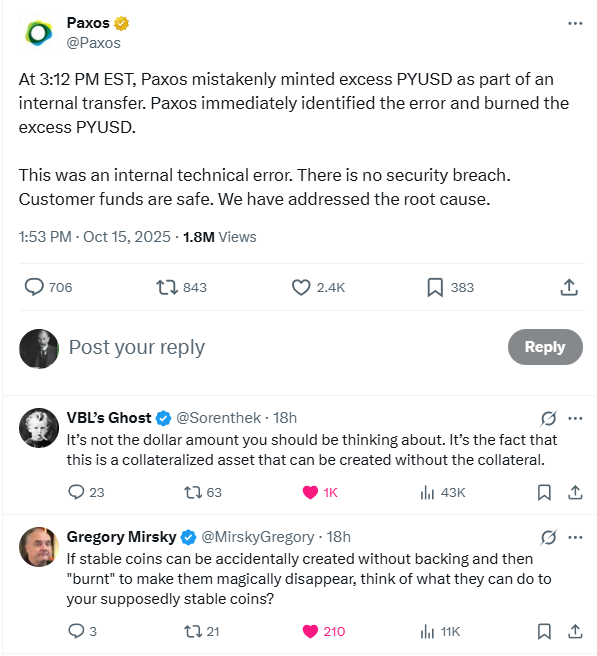
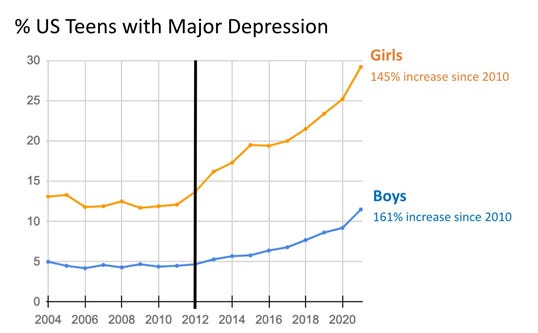
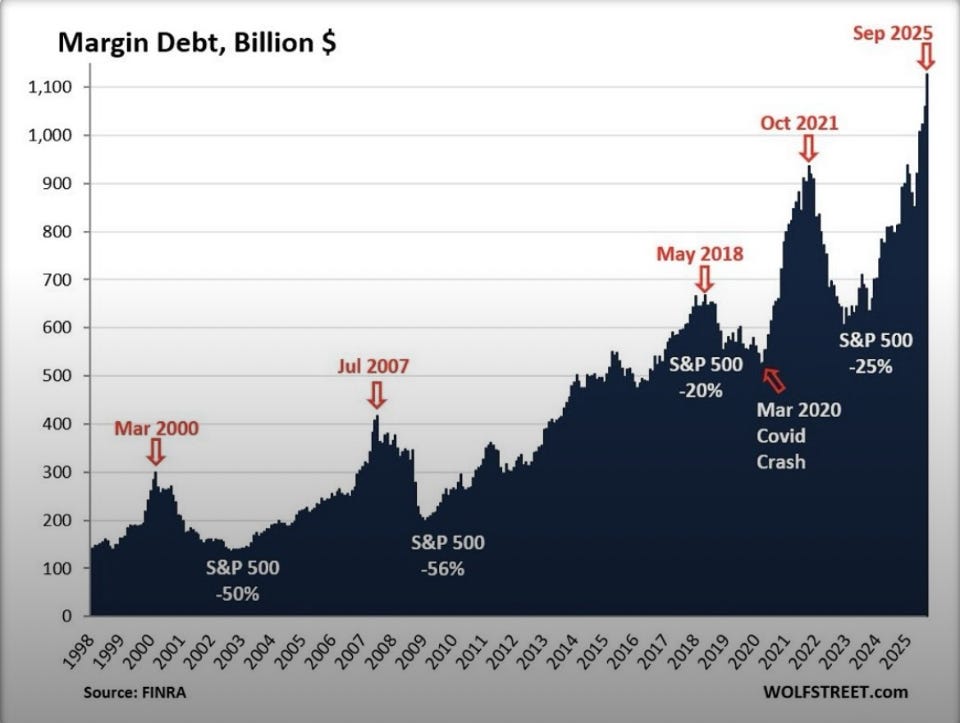
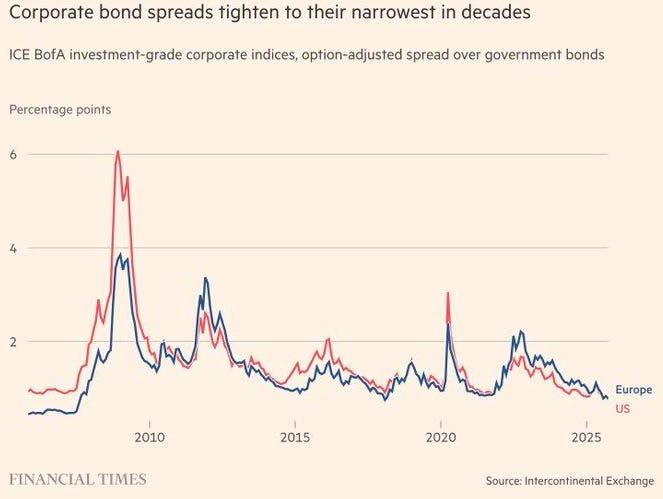


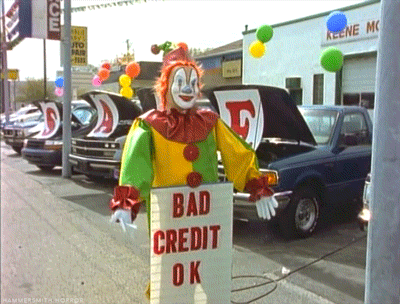


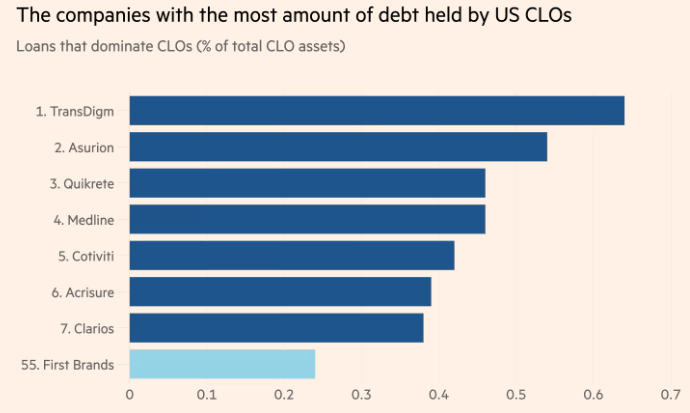


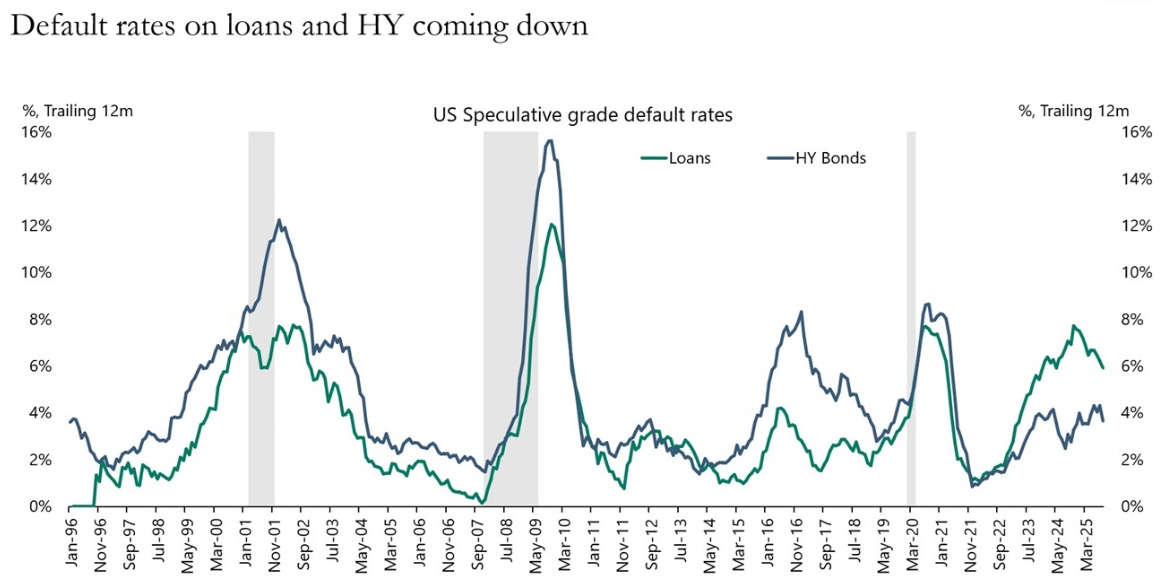

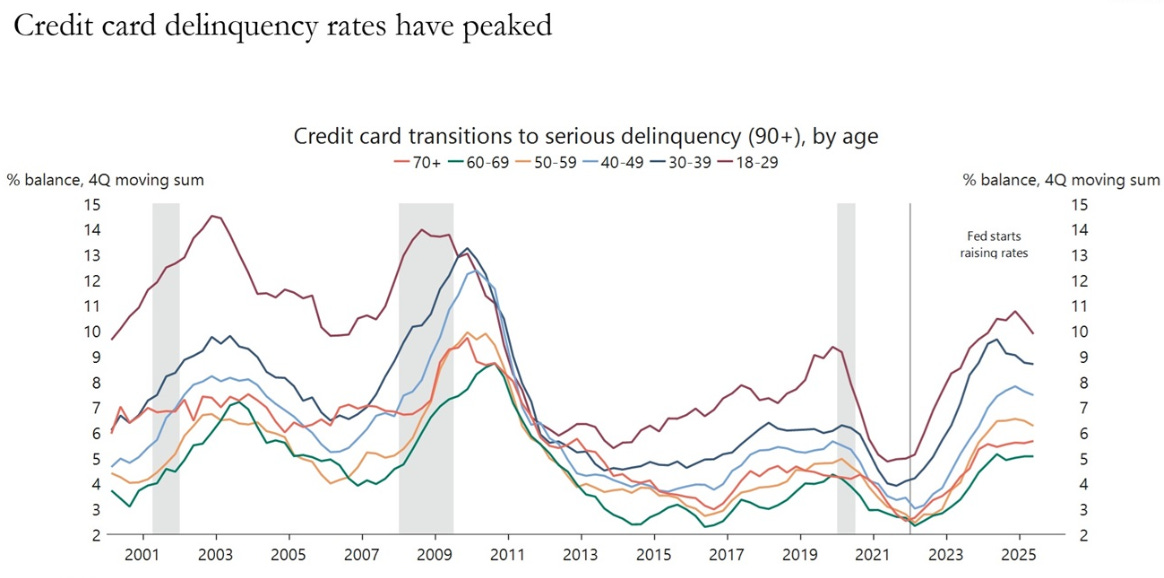

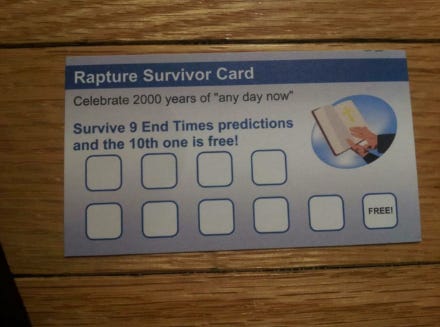



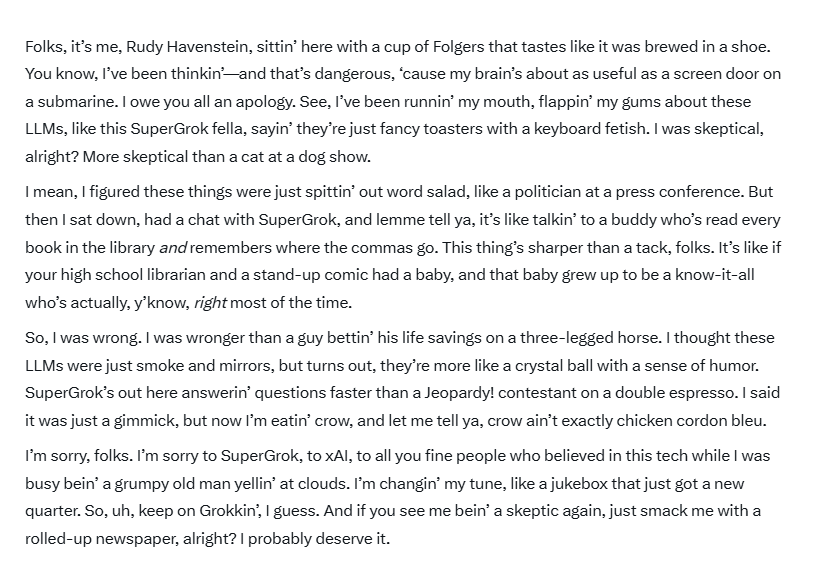


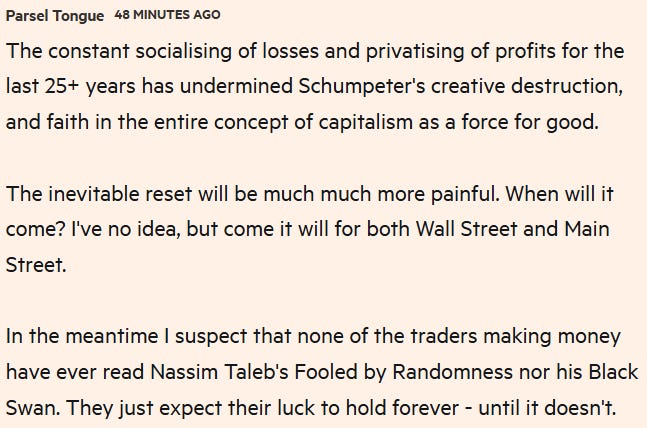

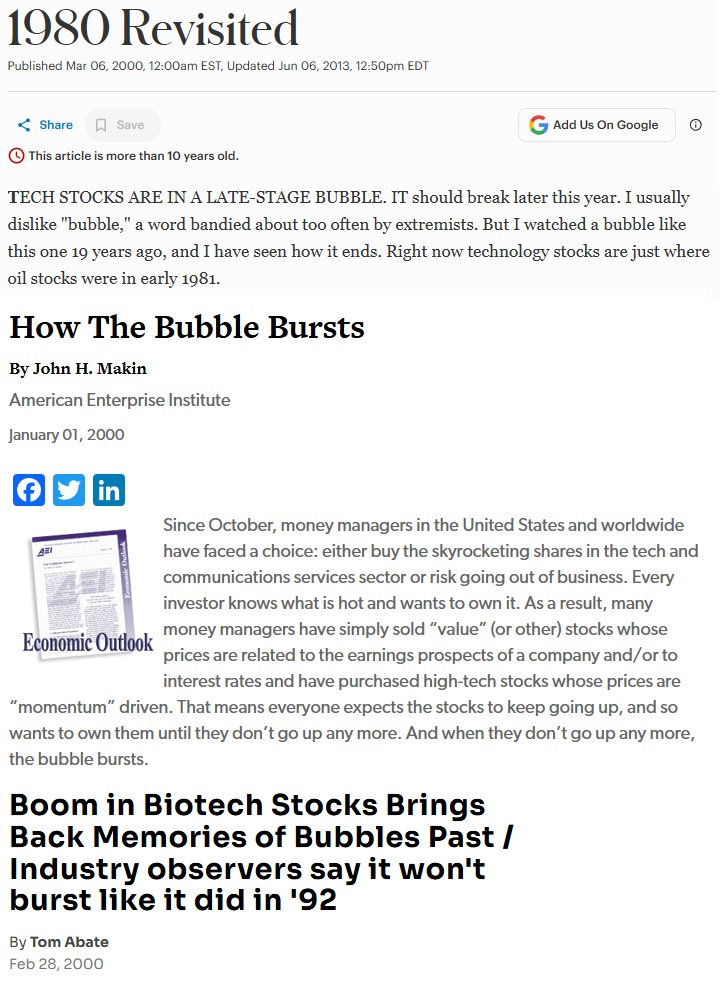


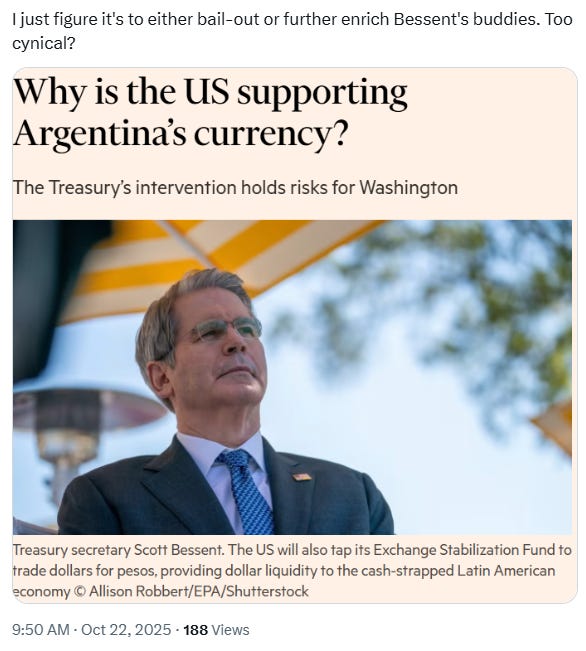
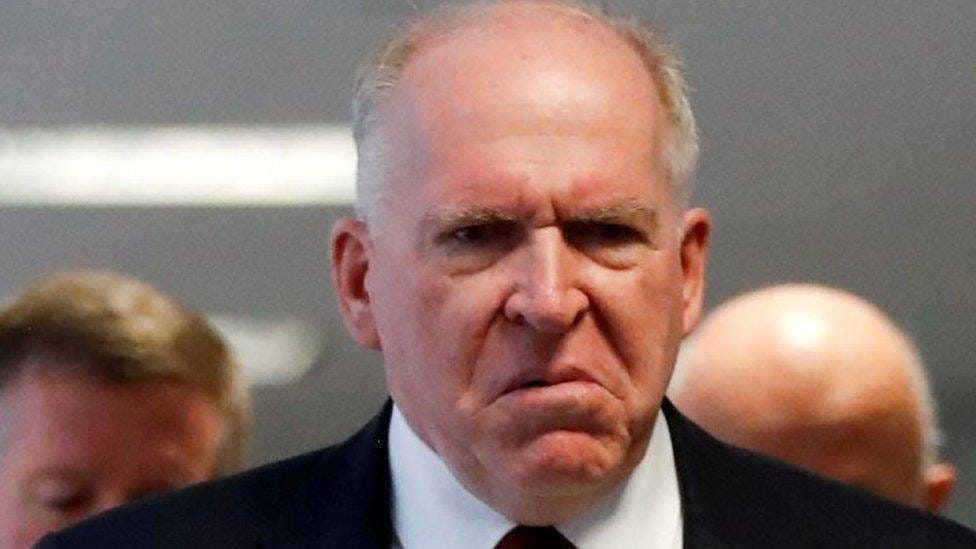
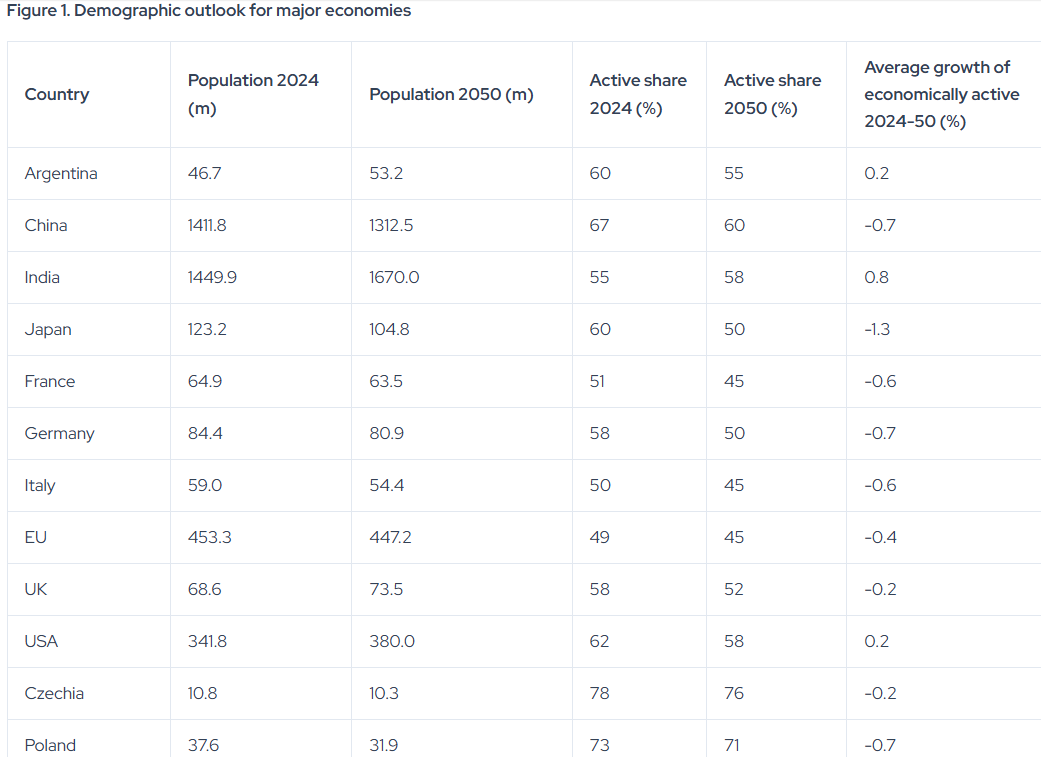





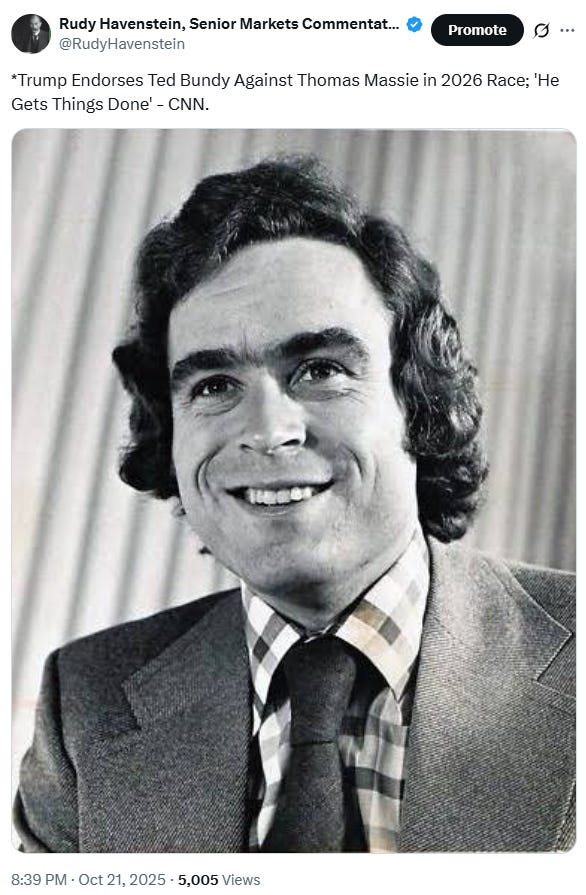

Always a great read even if some of the subject matter is downright depressing. Keep up the good work!
The Julian Garran interview with Grant Williams so concisely summarized what I couldn't put together but felt. Like the Global Crossing, 360 Network build out on steroids. Likely will provide value down the line but just a massive waste today.